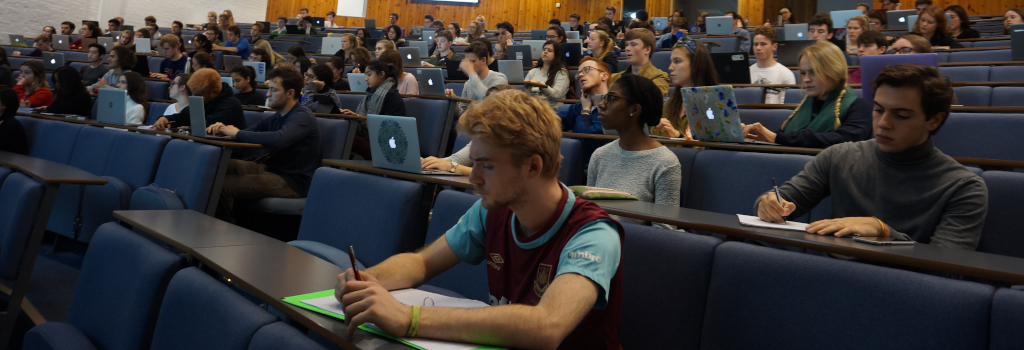Large Group Teaching

The increasing trend towards large group teaching poses some challenges. It can be difficult to keep the students interested and engaged, meet all students’ needs, and address questions and queries adequately and efficiently. Below are some tips for how to address these issues.
Teaching in large groups means that you need to engage your students both before, during and after the lecture/session. Through careful planning and preparation, you can ensure that all of your students are actively learning in a large group setting.
Best Practice Tips
- Plan your session so that you have a range of learning activities to help students more fully engage with the learning outcomes.
- Ensure that you have clear learning objectives for each session, so that your students can work toward their learning goals.
- Get the students used to preparing for the lecture beforehand by guiding them through pre-session activities, i.e.:
- Upload your materials to the module site before the session, so that students can access materials and prepare
- Provide a list of ‘essential reading’ for lectures so that students can focus their reading in preparation for the session
- Provide some pre-class assignments to activate students’ prior knowledge and to help them to consolidate their learning
- Provide an icebreaker at the beginning of the lecture to activate the students’ prior knowledge
- Try not to lecture for more than 20 minutes at a time–consider inserting some discussion points to encourage the students to engage with the concepts for a time that you specify (e.g. 5 minutes). After that time is up, you can then ask them for feedback or questions from the larger group.
- Consider dividing the students into two groups, e.g. person A and person B. Person A can ask guided questions and person B has to respond. You can then address the full group after this short exercise.
- Consider using interactive technology, such as PollEverywhere or Padlet, to ask the students questions/keep them engaged. You can design quizzes or use the technology to ask key questions, as well as testing knowledge at the start of a session to help you assess the students’ needs and prioritise topics or particular skills to address.
- Use PowerPoint or a similar software to make the concepts you’re delivering as multisensory as possible. This can be done through using colour, videos, audio clips, images.
- Provide clear signposting in your lectures, through the design of your slides (e.g numbering) and through the language you use e.g. ‘Now we will look at’, ‘First we will…’
- Use a discussion board to help students more fully engage with the material after the session. You can include some guided questions that students can then address and discuss together while you monitor their progress. This can also help you to assess how well they are engaging with the readings and your lectures.
Resources
Schreyer Institute for Teaching Excellence, Penn State University Teaching large classes
UCL’s Large Group teaching toolkit
References
